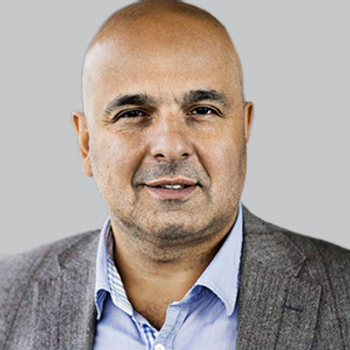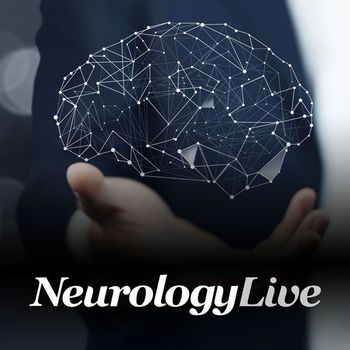
Data from the RAINBOWFISH study and a large-scale extension, FIREFISH, were the basis for risdiplam’s expanded indication, which now includes babies with SMA under 2 months old.

Marco Meglio, Assistant Managing Editor for NeurologyLive, has been with the team since October 2019. Follow him on Twitter @marcomeglio1 or email him at [email protected]

Data from the RAINBOWFISH study and a large-scale extension, FIREFISH, were the basis for risdiplam’s expanded indication, which now includes babies with SMA under 2 months old.

More than 60% of adolescents felt that it was more important to measure decreases in the frequency and intensity of headaches in terms of severe headaches/spikes rather than total headache days.

Emily Harrington, MD, PhD, physician-scientist at The Ohio State University Wexner Medical Center, provided thoughts on the importance of World MS Day and the issues that plague the MS community.

Investigators identified a duration-response pattern that was also present within the strata of high vs low-medium intensity statin therapy in a cohort of more than 16,000 individuals.

Composite SOT scores—lower in patients with migraine vs controls—were moderately correlated with fear of falling, dizziness disability, kinesiophobia, and migraine frequency.

The proportion of patients who achieved an at least 50% reduction in monthly migraine days was significantly higher among those on either erenumab dose compared with placebo.

Among participants with a high dementia polygenic risk score, the 12-year cumulative incidence of dementia was 4.3% for those with hypertension compared with 2.8% for those without.

Falls, a common occurrence for patients with spinocerebellar ataxia, were significantly reduced following treatment with troriluzole after 48 weeks.

Patients with relapsing multiple sclerosis who had progression independent of relapse activity were subject to global brain tissue loss similar to that of patients experiencing solely relapse activity.

Although neutropenic fever was common among patients, there was no significant difference between disease-modifying therapies, including those with long-lasting effects.

The founder and chief medical officer of Omniscient Neurotechnology provided commentary on expanding the brain map, the use of advanced technology, and the need to familiarize clinicians with connectomics.

In 2 pivotal trials, the agent showed statistically significant superiority over placebo at 2 hours on coprimary end points of pain freedom and freedom from the most bothersome symptom.

In total, 14% of those on antiseizure medication who did not receive periconceptional folic acid experienced preterm birth compared with 5% of those with supplementation.

A year after the 2021 ASA/AHA stroke prevention guidelines were released, experts in the field shared some of the most notable changes to care, and the areas that still need to be addressed going forward.

Resective epilepsy surgery was generally associated with good outcomes regarding employment status, seizure reduction, and antiseizure medication reduction.

In total, 65% of those who self-discontinued treatment experienced further seizure recurrence, which led to a majority (84%) of patients restarting treatment.

Despite good tolerability with few drug-related treatment emergent AEs and increased muscle volume, the failure to provide clinically relevant improvements in muscle function led to the discontinuation of ACE-083 for CMT in 2020.

If approved, ABBV-951 would become the first subcutaneous delivery of levodopa and carbidopa, the gold standard for symptom management in Parkinson disease.

At the end of the 12-month treatment period, interseizure cluster intervals increased from 14.8 days in the first period to 35.8 days in the final 90-day stretch.

A PK/PD model indicated that a higher concentration of nusinersen may predict an additional 5-point increase in CHOP-INTEND score beyond that observed with the approved 12-mg dose.

In preataxia individuals, serum neurofilament levels increased with proximity to predicted ataxia onset, with significant elevations already present 5 years before onset.

The director of the Division of Movement Disorders at the USC Keck School of Medicine provided insight on the next steps to justify whether reflex tears are a reliable biomarker for Parkinson disease.

As of the cutoff date, median time to first hospitalization was not yet reached in the AMX0035 treatment group compared with 14.1 months in the group originally randomized to placebo.

When compared with healthy controls, patients with SMA type 3 performed worse on tests that assessed executive function, language, and visuospatial abilities, suggesting that intrinsic brain pathology may exist in these patients.

Confounders such as parental characteristics, sociodemographics, and pregnancy-specific factors led to an attenuated risk of seizures and epilepsy in children whose mothers were on SSRIs or SNRIs.

Since its approval for the treatment of medical refractory epilepsy in 2013, the closed-loop neuromodulation device has had its efficacy and safety confirmed in several pivotal studies and will now be assessed in focal epilepsy in the RESPONSE trial.

In a population of adults younger than 50 years with embolic stroke of undetermined source, despite repeated diagnostic workup at the time of recurrent stroke, no source of embolus was identified for two-thirds of participants with recurrent ischemic strokes.

Following the positive phase 3 findings, UCB plans to file regulatory submissions for both zilucoplan and rozanolixizumab later this year.

The chief executive officer of the Child Neurology Foundation discussed how her background in pediatric neurology will be used in a newly appointed NIH council position.

Those using riluzole concomitantly experienced even greater benefit from methylcobalamin, as demonstrated by increased differences in scores on ALSFRS-R vs placebo, suggesting the combination may be effective in ALS.